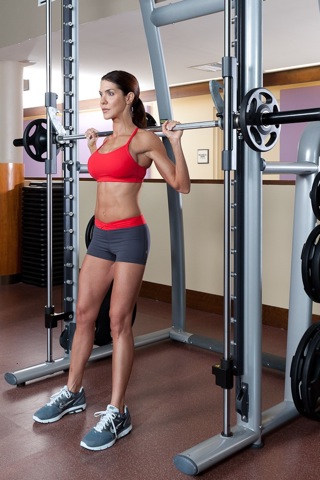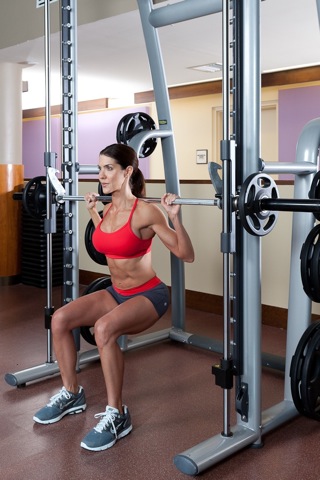FEbruary 2012
The Most Common Gym Injuries
By: Marta Montenegro
(This article was originally posted on martamontenegro.com / Photography credits. Andrew Meade)
If you avoid working out at
the gym because of fear of injury, don’t. By not going to the gym, you
are at worse risk of developing anything from a coronary artery disease
to osteoporosis, especially if you sit in front of the computer for
eight hours or so.
Gym injuries happen. From 1990 to 2007, 25,335 weight training injuries were reported in U.S. emergency departments. Even though the figure looks small in compared to other type of
injuries; an injury can be emotionally, physically and financially
costly. Sometimes, it can even take you away from the gym for much
longer than what you thought. But, this doesn’t have to happen if you
understand the risks and how to avoid them.
Men’s trunk vs. Women’s foot
“By far, the most common acute, non-urgent injuries are muscular
strains and ligamentous sprains, accounting for 46 percent to 60 percent
of all acute injuries in strength training,” according to “The Overview
of Strength Training Injuries: Acute and Chronic,” Current Sports Medicine Reports (2010).
Moshe Lewis, MD, MPH, Volunteer Clinical Faculty, UCSF Chief,
Physical Medicine and Rehabilitation, explains that the lower back,
knees, shoulders and ankles are the most frequent injury spots.
“Anywhere there is a joint, there is a possible lurking as you grind
these joints during exercise,” he says. “This can bring together a
perfect storm of advancing age, gravitational forces and wear and tear
resulting in an injury”.
The strength training overview report shows that males had a
larger proportion of upper trunk injuries (26.8 percent) when compared
to women (18.4 percent). Females had a larger proportion of foot
injuries (22.9 percent) than males (11 percent).
Lewis, who was not involved in the study, points out that women are
more likely to be injured in fitness classes, whereas men are more
likely to cause injuries to themselves by lifting weights. Few men
cross gender lines to join the females in these exercise classes that
traditionally involve a rapid succession of twisting movements, a common
root of injuries.
Weights Warning
Richard Lopez, Ph.D., exercise physiologist,
professor at Florida International University, examines the most
sensible injury spots when lifting weights:
1. Shoulder risks when doing shoulder press, dips and chest press
How to avoid it: Avoid excessive external rotation
of the upper arm when doing shoulder press. If you are using machines,
select a machine that provides a hand position that does not require
excessive external rotation. Similarly, if using free weights do not perform the overhead press from behind the neck. Avoid the lat pull down in the behind the neck position entirely. Also avoid using a heavy weight that requires the use of momentum and
induces poor form. Instead perform the exercise using a controlled
motion and concentrate on good form.
In regards the chest press and dips moves, avoid overextending the
shoulder joint. Keep the arms close to the bench when doing dips.
Likewise, when performing chest presses, keep the arms at a 70 to at most 80 degree angle in relation to body to help avoid shoulder impingement. If you suffer from shoulder impingement, do shoulder
press with a neutral grip (palms facing each other) to avoid excessive
pressure in this area.
2. Lower back risk with squats, deadlifts, leg press, lunges standing exercises, rotations: The back is a staple in the body stabilization, therefore it has a role in all moves.
 
How to avoid it? First, check your form. One way to reduce the risk of injury is to maintain good form and with many exercises this means maintaining the “neutral spine” position.
Don’t tilt your pelvic back or forward, keep it in the neutral
position. Likewise, strengthen the abdominals by doing a combination of
static and dynamic moves such as: a) planks. Start with the basic,
holding the position for up to 60s, repeat 3 times, to move gradually to
planks raising one feet at a time to then one arm at a time without
twisting your hips and while keeping the back flat. b) high and low
cable wood chops (2-3 sets of 10-12 reps).
3. Knee risk when doing leg exercises and/or high impact moves such as plyometrics
How to avoid it? When performing free weight
exercises such as squats and lunges, flex the hips and knees slowly.
Keep you bodyweight over the middle and heel area of the feet. Very
importantly, keep the knees aligned over the feet and do not let the
knees go beyond the toes when descending. To avoid excessive stress on
the ligaments, don’t let the thighs to go beyond the parallel position.
Also stop the descent if the lower back begins to round or the heels
rise off the floor. When performing the leg press or hip sled exercises
avoid using too much weight. Performing the exercises with too much
weight places excessive strain on the tendons. As we age, tendons are
the weak link the muscle-tendon chain. You know you are using too much
weight when your form begins to deteriorate. If you find yourself
slipping down in the seat and rounding your back it’s too much weight.
- Foot risks: The most common type of ankle sprains,
lateral or inversion sprains, occurs when the foot is turned inward on
the leg. Frequently the cause of injury can be stepping on an uneven
surface, or landing with the bottom of the foot turned inward.
How to avoid it? In step classes the exercisers are
required to step up and down at various angles. As the class progresses,
in trying to keep with the cadence (or instructor), the participants
can fatigue and lose their coordination. When this happens they don’t
step unto or off of the platform correctly and they roll their ankle.
Maintain good technique even if it means falling behind the cadence.
Also remember that it is OK to stop for a while and catch your breath.
Also, when lifting weights, perform the exercises in standing position
and once you feel strong, mix up some moves with one leg lifted off the
floor. It’s important to work on balance moves since we tend to spend so
much time sitting.
Watch where you drop the weights off
Those free weights injuries don’t happen just because of the
neuromuscular challenge that they impose to the body. Actually, the most
common mechanism of injury – in general, regardless of the age – was
weights dropping on the person (65.5 percent). Make sure that when
lifting weights you leave the proper room from the other trainees to
perform their exercises and try to not walk up in front of a person when
doing challenging moves such as squat, lunges and shoulder press where
concentration is a must to avoid injuries.
Cardio Warning
For Ken Baldwin, assistant professor Department of Sport and Wellness SUNY-Plattsburg, everything starts with a good posture. Baldwin notes he is concerned when people are running, spinning or using the elliptical machine.
“When people hunch over and lean their head forward, they are not in
good alignment, their back’s rounded out. Every time your heel hits the
ground, you’re putting major stress on the back—from the lower back to
cervical spine. If you do it for 20 to 30 minutes in the wrong
alignment, there’s no wonder why your knees, hips and back are bothering
you,” says Baldwin.
Another threat is the rowing machine. Moshe Lewis, MD, MPH, Volunteer
Clinical Faculty, UCSF Chief, Physical Medicine and Rehabilitation,
explains that “too many middle-aged men think they can walk into the gym and climb on the rowing machine like they were still in their 20s, only to wind up flat on their backs, the result of a sprained back.”
How to fix it?
Baldwin recommends looking at the entire posture alignment when hitting any cardio machine.
“Make sure both shoulders are level, the head is leveled,” he says.
“When I look at them from the side with the ear, shoulder, hip joint
going linear in a straight line, the better posture alignment allows
more muscles to develop better in balance with the body.”
Four points of posture
1) Sit/stand as tall as you can—think about lengthening your vertebrae in your spine from your waist to your head.
2) Shoulders at 90 degrees, chest is held up high. When the lungs are realigned in proper position—they perform better.
3) Retraction: Keep your shoulder blades back/retracted. This works
two major muscle structures, medial trapeziums and your rhomboids, and
can help maintain posture.
4) Pull your abdominal muscles in, making them tight. Contract. Pull your belly button into spine.
Don’t get trapped in a chronic injury
While these are the most common acute injuries, tendinopathies,
inflammation of a tendon, is the most chronic issue when it comes to the
knees and shoulders. Experts explain that typically these conditions
develop due to repetitive motions and overuse. Poor technique, lack of
the appropriate recovery, muscle imbalances and lack of cross-training
activities are leading causes.
About the Author
Marta Montenegro, MF, MS, CSCS, NSCA-CPT, is
continually updating her teachings with the latest in fitness science,
sharing these updates with readers of her column on AOL en Espanol and
Fox Latino. She has frequently contributed to both local and national
media outlets, including CNN, NBC, ABC, CBS and Univision and even
matched wits with a panel of comedians on “The Joy Behar Show.” She is
also a weekly guest on CNN’s NotiMujer. One of Marta’s areas of
specialization is cardiac rehabilitation and she serves as a
spokesperson for the American Heart Association. She was recently won
honors in the Sports & Athletics category for Miami-Dade County’s In
the Company of Women Awards 2011.
|
